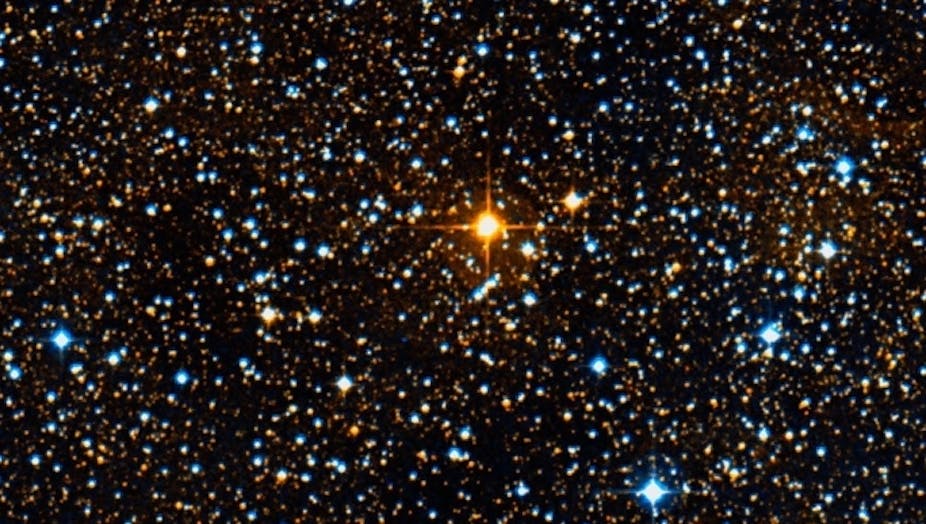The universe is such a big place that it is easy to get baffled by the measurements that astronomers make. The size of UY Scuti, possibly one of the largest stars we have observed to date, is certainly baffling.
Not surprisingly, UY Scuti is classified as a “hypergiant” star – which is the classification which comes after “supergiant” and regular “giant”. Its size may make it the biggest, but it is not the most massive star (where the “mass” in massive stands for the amount of matter in the star).
UY Scuti’s mass is probably slightly more than 30 times the mass of our sun, which places it nowhere near the top of the most massive stars list. That honour is held by a star with the charming name of R136a1, which clocks in at 265 times as massive as the sun, but only 30 times the radius of the sun. Mass and physical size don’t always correlate for stars, particularly the case for giant stars.
So while UY Scuti is only around 30 times more massive than the sun, it has a radius somewhere in the region of 1,700 times larger than the radius of the sun. This star is one of a class of stars that varies in brightness because it varies in size, so this number is also likely to change over time. The margin of error on this measurement is about 192 solar radii. This uncertainty is why I used “possibly one of the largest stars” in my description of UY Scuti. If it is smaller by 192 solar radii, there are a few other candidates that would beat UY Scuti.
The approximate size of the star is about 750m miles, or nearly eight astronomical units, where one astronomical unit is the distance between the earth and the sun. This is large enough that it would extend past Jupiter.

The complication with stars is that they have diffuse edges. Most stars don’t have a rigid surface where the gas ends and vacuum begins, which would have served as a harsh dividing line and easy marker of the end of the star.
So in order to usefully define the “edge” of a star, we use the location of the photosphere. The photosphere is where the star becomes transparent to light, and where photons – that is, light particles – can escape. As far as an astrophysicist is concerned, this is the surface of the star, as this is the point at which photons can leave the star. Going any further towards the centre of star would mean photons caught in a series of bounces, and unable to stream freely.
To be clear, the photosphere is not where the gas of the star ends – stars also have atmospheres, which are transparent to light, and which extend beyond the photosphere. But the atmosphere is not considered to be part of the star when it comes to defining its radius.
For UY Scuti, whose photosphere extends beyond the orbit of Jupiter, this means that the light produced in the centre of the star would not be able to stream freely from the star until it had made it beyond Jupiter. Beyond that, there would be a diffuse, hot atmosphere which would extend even further out into our solar system, and a large amount of gas and dust which was lost from the star over the years. This nebula of gas lost from the star extends out to 400 astronomical units, which is 10 times further out than Pluto.

